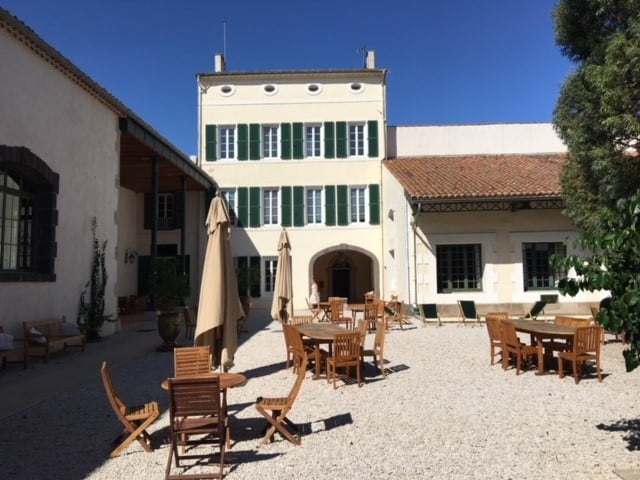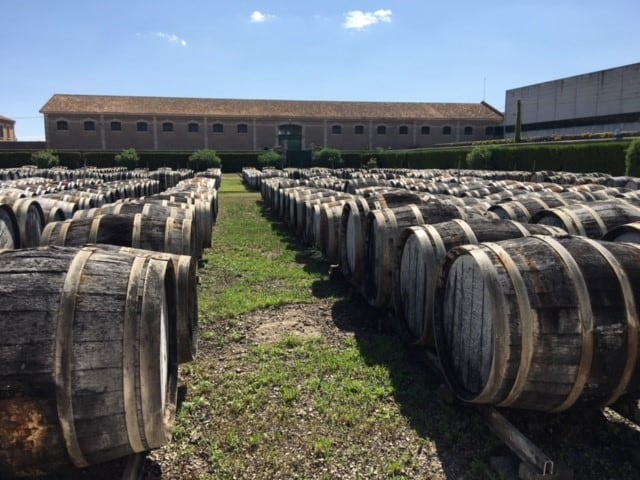The company, now owned by Martini & Rossi, part of Bacardi-Martini, started life over 200 years ago in Lyon, France, before moving its entire operation to Marseillan in 1850. Vermouth means ‘absinthe’ in French or ‘wormwood’ in German.
Strong US market sales

Now the drinks manufacturer exports 80% of its products to nearly 100 countries worldwide with its Original French Dry vermouth, enjoyed as an aperitif and in Martini Cocktails.
There are three other variants of the drink including; Red Noilly Prat, which is not sold in France, except from the Noilly Prat shop in Marseillan, because it is produced for export, mainly to the US.
Ambre Noilly Prat is exclusively made for the French market and Extra Dry Noilly Prat, is formulated for the American extra-dry martini cocktail market. Extra Dry is only shipped to North America.
According to Technavio the global vermouth market is projected to grow to $18.79bn by 2021, at a CAGR of more than 3% over the forecast period. The top three markets where it is consumed are EMEA; Americas and APAC.
“EMEA dominates the vermouth market, holding over 65% of the global shares. The high demand for vermouth from European countries such as Spain, Italy, and France is the key factor behind the dominance of the market segment,” said Manjunath Reddy, lead analyst, Technavio.
Other areas of interest are Spain where vermouth is consumed on a daily basis and it is booming in Africa, driven by good grape harvests that help produce wines with good acidity and sugar levels, and favorable weather conditions.
The demand for both dry vermouth and sweet vermouth is rising considerably in the Americas, especially in the US. Increasing health consciousness among consumers, combined with changing consumer preferences are driving the growth of vermouth market in the region.
Mexico, Argentina, & Chile
Also, the rising production of vermouth in an increasing number of wineries is impacting the growth of the market in the region. The turnaround in Brazil's economy is another key factor that will positively impact the demand for vermouth. The demand for vermouth is set to increase in other major markets in the Americas such as Mexico, Argentina, and Chile.
“APAC is expected to be the fastest-growing segment of the global vermouth market, due to the increased consumption in major countries such as China, Australia, Japan, and New Zealand,” added Reddy.
Vermouth consumption in China is mainly driven by rising number of millennial consumers, who are inspired by the Western culture. However, the climatic conditions in most APAC countries have not allowed for the development of the wine culture prevalent in the Mediterranean countries.
Speaking to BeverageDaily, Lisa Callender, Vermouth expert, La Maison Noilly Prat, said its vermouth in Marseillan is processed much in the same way as it was over 200 years ago, using two white wines from Languedoc, Picpoul and Clairette, which are aged separately, first in caves for eight months in large oak vats then, transferred to smaller oak barrels, in an outdoor area called the Enclos, where they remain for a year.
“To sweeten the vermouth the manufacturer uses a liquor called a Mistelle based on Muscatel grapes from southern Spain. This is added to the wines to soften them, along with a dash of fruit essence to accentuate their flavor,” she said.
'Angel's portion'
“While indoor aging results in 3% evaporation (called the part des anges, or angels’ portion) the outdoor rate is twice that, yielding wines with lower alcohol content but more intense flavor.

“The maître de chai then blends the dry, full-bodied wines with raspberry and lemon liqueurs and a secret mixture of aromatics, bitter orange peel and some 20 herbs and spices, including chamomile, coriander and nutmeg, macerated directly in the wine.
“The exact mix of herbs and spices that goes into Noilly Prat is a closely guarded secret, but includes camomile, bitter orange peel, nutmeg, centaury (Yellow Gentian), coriander, and cloves.”
After pressing and filtration, the wine rests another six months in oak barrels before it is bottled and shipped in tankers to Beaucaire, Gard, where it is bottled by Martini & Rossi.
The museum at Noilly Prat, Marseillan, opened earlier this year and includes a multi-sensory herbs and spices exhibition, an archive of former employees, artifacts, a tasting room and a special mention of Anne-Rosine, who took over the family business in 1865, following the death of her father Louis Noilly and husband Claudius Prat, who set up the company Noilly Prat.

